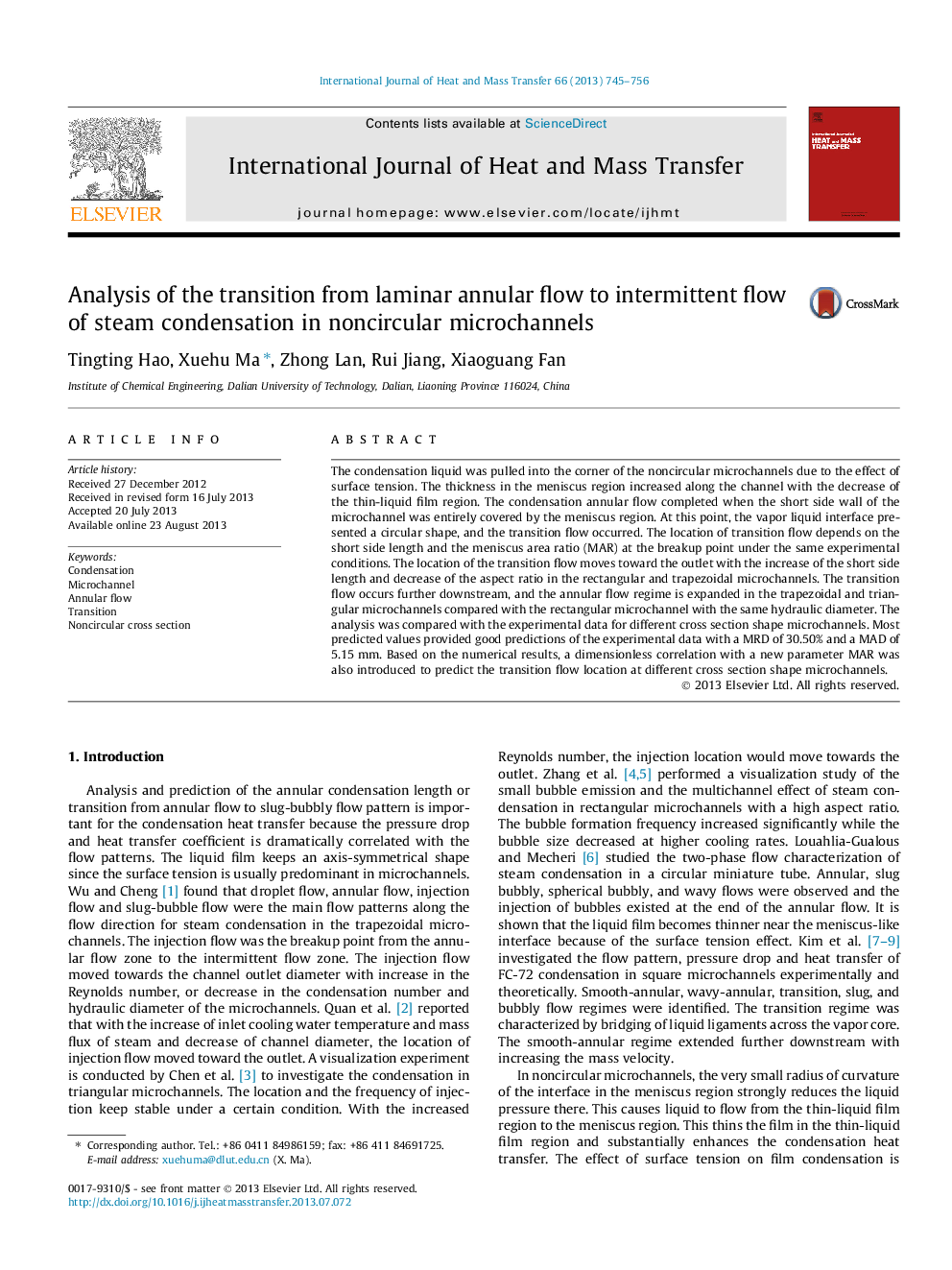| Article ID | Journal | Published Year | Pages | File Type |
|---|---|---|---|---|
| 7058197 | International Journal of Heat and Mass Transfer | 2013 | 12 Pages |
Abstract
The condensation liquid was pulled into the corner of the noncircular microchannels due to the effect of surface tension. The thickness in the meniscus region increased along the channel with the decrease of the thin-liquid film region. The condensation annular flow completed when the short side wall of the microchannel was entirely covered by the meniscus region. At this point, the vapor liquid interface presented a circular shape, and the transition flow occurred. The location of transition flow depends on the short side length and the meniscus area ratio (MAR) at the breakup point under the same experimental conditions. The location of the transition flow moves toward the outlet with the increase of the short side length and decrease of the aspect ratio in the rectangular and trapezoidal microchannels. The transition flow occurs further downstream, and the annular flow regime is expanded in the trapezoidal and triangular microchannels compared with the rectangular microchannel with the same hydraulic diameter. The analysis was compared with the experimental data for different cross section shape microchannels. Most predicted values provided good predictions of the experimental data with a MRD of 30.50% and a MAD of 5.15Â mm. Based on the numerical results, a dimensionless correlation with a new parameter MAR was also introduced to predict the transition flow location at different cross section shape microchannels.
Related Topics
Physical Sciences and Engineering
Chemical Engineering
Fluid Flow and Transfer Processes
Authors
Tingting Hao, Xuehu Ma, Zhong Lan, Rui Jiang, Xiaoguang Fan,
